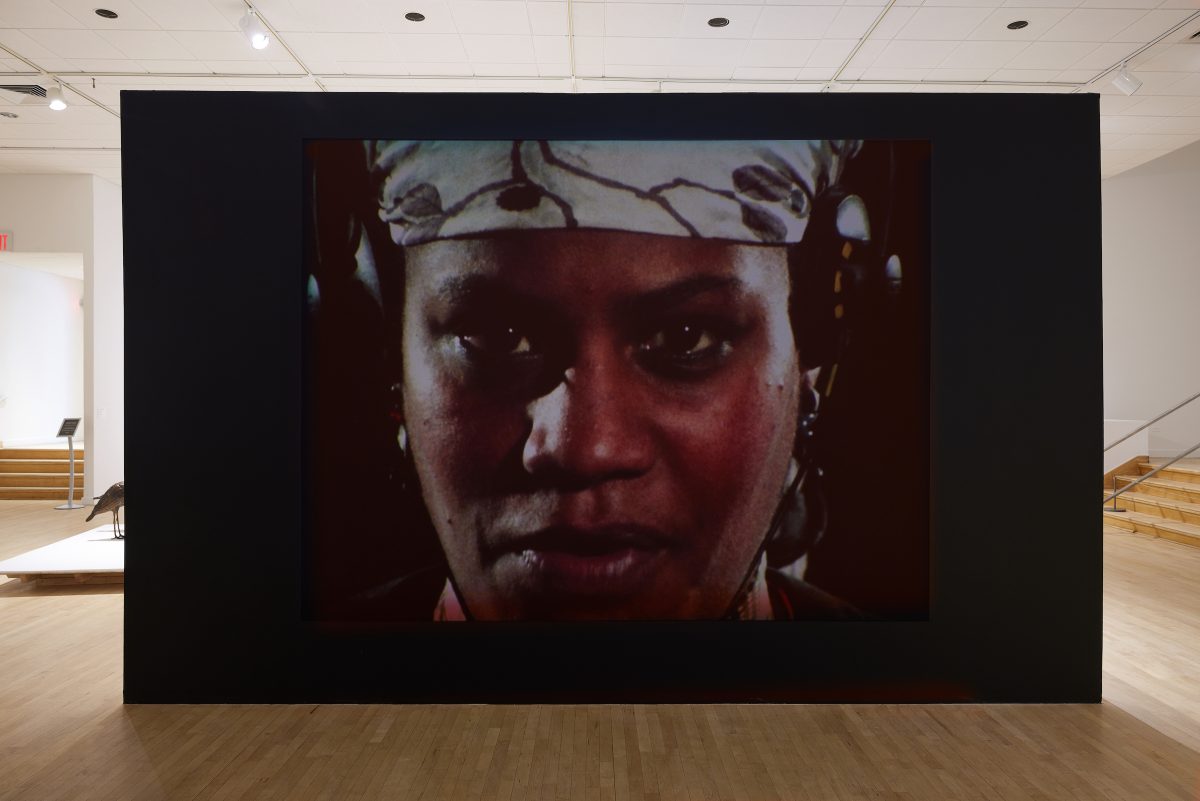

In its exploration of more just realities, Born in Flames: Feminist Futures upends time as we know it. The past flows seamlessly into the present, swirling around dizzying conceptions of justice, morale, and hope. If time is liquid, elapsing like some fluid creature, our futures require channeling against oppressive currents. To be born aflame, as the featured artists suggest, is to blaze towards radical futures.
Curated by Jasmine Wahi, the museum’s Holly Block Social Justice Curator, the group exhibition at the Bronx Museum of the Arts convenes fourteen femme-identified and non-binary artists — including Lizzie Borden, Caitlin Cherry, Chitra Ganesh, Firelei Báez, María Berrío, Sin Wai Kin, Tourmaline, and Wangechi Mutu — to envision alternative feminist realities unified by a shared desire for justice. This impulse flows through all the works in the show, conjuring entire worlds that respond to wounds inflicted by both capitalism and patriarchy. Facing the entrance of the exhibition, a projection of Borden’s 1983 documentary-style, feminist cult classic, Born in Flames, foregrounds a vast feminist and futurist lineage of artwork. The film, after which the exhibition is named, is eerily relevant to present-day struggles for social justice with its depiction of police brutality, sexism, and transphobia set in a fictionalized New York City; simultaneously a time capsule and a vision of an unjust present and future.

These makings of what has yet to arrive are felt throughout the show. In “On rest and resistance, Because we love you (to all those stolen from among us)” (2020), Báez meticulously layers the skin of the body, transparent dress, an afro, and fauna to an almost-opaque effect. The texture of the painted flora mimics the texture of the figure’s rich coily hair, while one visible eye peeks through a spray of flowers. A copy of Octavia Butler’s acclaimed science fiction novel, Parable of the Sower is held open in the figure’s hand. Both the Afro-futurist text and figure are hidden in plain sight, impenetrable to any reality that lies beyond the fictional universe of the painting.
Mirroring the former painting “Untitled (New Chart of the Windward Passages)” (2020) hangs across the gallery’s walkway. Here, Báez paints the body as an engaged fluid, an ocean — if not a galaxy — of pigments churns within the dynamic figure, powerfully poised atop a mapping of the island of Hispaniola. Color is starkly contrasted between land and body, the former left devoid of it in its antiquated and colonial past. Báez’s diasporic futures envision empowered anti-colonial figures.

This interest in re-narrativizing the body re-appears throughout the show. In Sin Wai Kin’s surreal and trance-like film, “Today’s Top Stories” (2020), the artist, painted in cat-like, blue and gold pigment, performs a reading of poetic prose while seated in the style of a news anchor. In a serene and monotone voice, they deliver lines like, “You will cease to exist” or “You are immortal” as animated butterflies revisit the screen, inviting more unstable conceptions of nonlinear time upon which the body can be understood as limited (mortal), and the self as unbounded.
Similarly, Tourmaline’s short film “Salacia” (2019) echoes this understanding of an immaterial sensibility. Through the film, time is made into space, as it reimagines the life of Mary Jones, a real-life trans woman that lived in New York’s Seneca Village in the nineteenth century. As Jones reminds us, chanting repeatedly in the film’s final moments, “We can be anything we want to be.”

Born in Flames: Feminist Futures continues through September 21 at the Bronx Museum of the Arts (1040 Grand Concourse, Bronx, NY). The exhibition was curated by Jasmine Wahi.
0 Commentaires